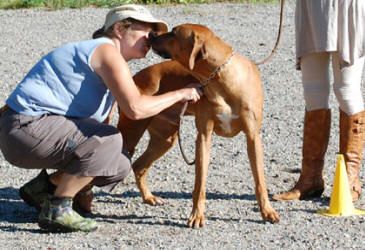General info
The owner leads the dog through a series of defined situations staged by trained technicians. A trained mentality descriptor follows the dog and notes the dog’s reactions. MH is not a test where the dog will pass or fail, but more of a description that will be used for breeders and puppy owners, dog owners, researchers and society at large. Dog’s genetics is very customizable, meaning that dogs can inherit behaviors and characteristics from its parents and bloodlines. With the help of MH, the breeders has a opportunity to influence the puppies’ behaviors by strengthening or downplay them in the selection of the parents.
The MH-test is also a way for breeders to do follow-up on a litter, several litters from the same parent or whole family groups. Many breed clubs have a profile that describes the breed’s general character, both mentally and physically. By the breed profile you can get a general idea about the breed. The breed profile says nothing about individuals, which MH does.
When the breeder mental describes dogs used in the breeding, the puppy buyer could have an indication of how the prospective puppy might be. MH then becomes a form of quality assurance when buying a puppy.
When the dog is older than one year but preferably before the age of two, it is appropriate to mentaldescribe the dog. MH provides information on what may be appropriate training for the dog, both in everyday life and at any training. Mental described dogs have “papers on” their mental qualities. It can for example be a good tool to disprove stereotypes about “dangerous dogs” or to make efforts towards specific problems with dog into the society. A mentalitydescription could also be helpful for selecting dogs for service or working, and breeding of these qualities.
MH describes the behavior that, through research, is shown to be highly heritable. In a standardized protocol and based on an intensity scale, the dog’s reactions to these different elements is described. The description takes about 45 minutes.
Here is an explanation of how a MH is implemented and describes what the descriptor is watching:
– Contact / sociality


– Play / playfulness
– Hunting / pursuing
– Activity
– Curiosity / interest

– Shot
– Fear

– Threats

(translated from Svenska Brukshundklubbens MH broschyr)
Press here to see a movie of Sheriff’s mentalitytest, and his son Diezel here and Ralph here.

